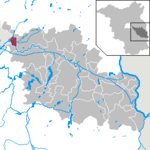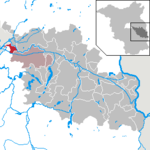Gigafactory Berlin-Brandenburg

Tesla Gigafactory Berlin-Brandenburg (colloquially "Giga Berlin") is a European manufacturing plant for Tesla, Inc. in Grünheide (Brandenburg), Germany. The campus is located 35 kilometres (20 mi) south-east of central Berlin near the Berlin Brandenburg Airport. It is Tesla's first manufacturing location in Europe.The facility and its Brandenburg location were announced by Tesla CEO Elon Musk in November 2019 at the Das Goldene Lenkrad award show. The factory is planned to produce batteries, battery packs and powertrains for use in Tesla vehicles, and also assemble the Tesla Model Y, with a proposed start of production in 2021. Construction work had begun by early 2020 with site preparation and foundation work underway. According to a January 2020 publication by the local environmental agency, the factory was expected to begin operations in July 2021. It was delayed due to administrative troubles. However, the "Giga Fest", celebration of completion was held in October 2021. On 22 March 2022, the factory was officially opened.
Excerpt from the Wikipedia article Gigafactory Berlin-Brandenburg (License: CC BY-SA 3.0, Authors, Images).Gigafactory Berlin-Brandenburg
Tesla Straße,
Geographical coordinates (GPS) Address Nearby Places Show on map
Geographical coordinates (GPS)
| Latitude | Longitude |
|---|---|
| N 52.4 ° | E 13.8 ° |
Address
Tesla Straße
Tesla Straße
15537 (Grünheide)
Brandenburg, Germany
Open on Google Maps











